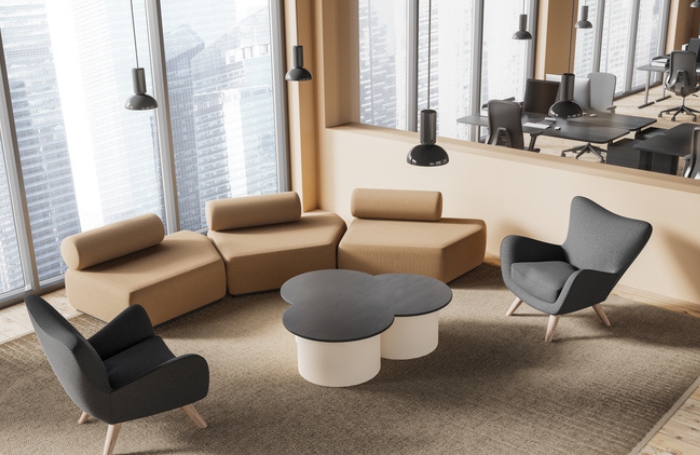Everyone thinks they know one fact about epilepsy: flashing lights trigger seizures. After all, there are often TV programme warnings that photographers’ flashbulbs will be going off during a particular report, prompting viewers to look away now.
But this almost universally accepted idea of a single trigger and response only highlights how little people know about epilepsy, says architectural designer and UCL postgraduate Jessie Buckle, even though it is the second most common neurological condition in the world after dementia.
Only around three per cent of people with the condition have photosensitive epilepsy and are triggered by flashing lights. Jessie says that epilepsy comes in many different forms, with a wide range of possible triggers and a wide variety of symptoms, including different types of seizures.
This education into the condition is highlighted in her groundbreaking thesis on the relationship between epilepsy, climate, and the built environment.

Where does epilepsy fit into inclusive design?
There has been scant research into the effect of the built environment on epilepsy despite the condition being so common.
“For people like me [Jessie was diagnosed as having epilepsy at 19-years-old], currently, there are no recommendations made in any built environment standard, which is one of the objectives driving this research,” she explains.
This lack of study, compounded perhaps by the experiences of epilepsy sufferers being so varied, means that the condition was not included among the neurological and neurodiverse conditions covered by the landmark PAS 6463:2022: Design for the mind – Neurodiversity and the built environment.
Many of the symptoms of epilepsy will overlap with other conditions such as autism, ADHD and dementia, so accessibility recommendations in the PAS standard and Part M of the Building Regulations can be useful even though they are not there specifically for epileptics.
Triggers are often associated with sensory concerns, which could be evoked by light, temperature changes and even smell.
“I could walk into an architecture environment and there could be patterning on the floor that could prompt a seizure, or it might be the room temperature,” Jessie says.
“There are so many different things. I had not considered until I had a seizure in India that climate and its connection with chronic neurological conditions should also be part of the conversation.”
Read more about how to download RIBA’s Inclusive Design Overlay to the Plan of Work.

What are the recommendations for architects?
Jessie has compiled a list of recommendations for designing for those with epilepsy – possibly the first of its kind – recognising that many of these recommendations will also benefit people with different neurological conditions and disabilities:
1. Quiet spaces: Some people with epilepsy experience ‘auras’, which essentially warn them they are about to have a seizure. Access to a quiet space allows them to feel they are somewhere safe before the seizure takes place and gives them somewhere quiet to recover afterwards.
2. Discrete sources of support, such as a recessed channel in a wall: This might require only a minimal design adjustment but will provide support and reduce the risk of injury. Creating minimalist and aesthetically pleasing support features through design helps disabled users feel more independent and reduces the clinical feel of spaces.
3. Indirect sources of light and the use of natural light: As mentioned earlier, three per cent of people with epilepsy suffer seizures due to light sensitivity and flashing lights through photosensitive epilepsy. Therefore, creating spaces using well-placed windows, indirect sources of light through light fittings focused on walls and ceilings (which act as reflectors and spread light around the space evenly), dimmable lighting and reducing glare by specifying diffusers and/or antiglare lights all could help.
4. Temperature controls: Ensuring the environment is a comfortable temperature helps keep the body’s temperature regulated and stabilised.
5. Use of natural and soft materials: Natural to promote wellbeing and soft to minimise risk of injury from falls.
6. Double-swinging doors or double-action doors: Enabling other people to gain access in the event that someone seizes behind a door.
7. Avoid contrasting and repetitive patterns.
8. Design with sensory overload in mind.
9. Clear wayfinding.
10. Refer to recommendations made for other neurodiverse conditions in PAS 6463:2022. Design for the mind and Part M Building Regulations, as some of these recommendations, will benefit those with epilepsy.
RIBA Plan of Work: Why architects should augment inclusive design throughout all work stages.
What’s next for research into epilepsy and the built environment?
This research only marks the beginning. Jessie is about to embark on a PhD that will expand on this research further and hopes that this research will impact the condition being recognised in the next PAS or industry guidance that architects can draw upon. But for now, Jessie thinks at least the conversation has now begun.
Thanks to Jessie Buckle, architectural designer and UCL postgraduate. If you would like to discuss epilepsy in the built environment or share experiences, follow Jessie on LinkedIn and email her.
Text by Neal Morris. This is a Professional Feature edited by the RIBA Practice team. Send us your feedback and ideas.
RIBA Core Curriculum topic: Inclusive environments.
As part of the flexible RIBA CPD programme, professional features count as microlearning. See further information on the updated RIBA CPD core curriculum and on fulfilling your CPD requirements as a RIBA Chartered Member.









